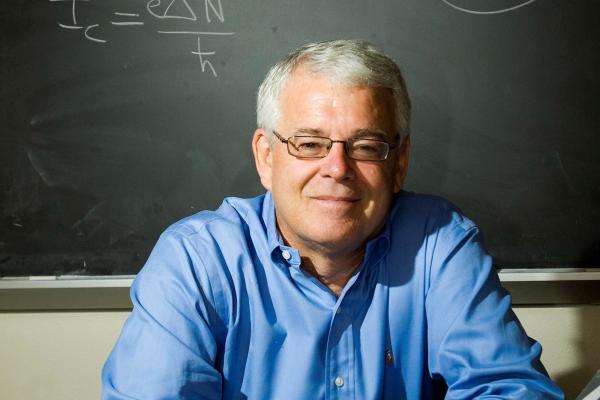
According to Wikipedia a moiré pattern (/mwɑːrˈeɪ/; French: [mwaˈʁe]) is a large scale interference pattern that is produced when an opaque regular pattern with transparent gaps is overlaid on another similar pattern with a different pitch or orientation. Moiré patterns are ubiquitous in two-dimensional van der Waals materials where the regular patterns are formed by two-dimensional crystals, and differences in pitch are established by differences in lattice constant, or by differences in orientation that can be controlled experimentally. The electronic properties of two-dimensional semiconductor, gapless semiconductor, and semimetal systems in which moiré patterns have been established can be described by continuum model Hamiltonians with the periodicity of the moiré pattern. I will discuss some examples [2,3,4] of new physics that can be explored using van der Waals material moiré patterns, comment on the recent discovery [5] of superconductivity in magic angle twisted bilayer graphene, and speculate on interesting future directions.
[1] Moire bands in twisted double-layer graphene, R. Bistritzer and A.H. MacDonald, PNAS 108, 12233 (2011).
[2] Fractional Hofstadter States in Graphene on Hexagonal Boron Nitride, Ashley M. DaSilva, Jeil Jung, and A.H. MacDonald, Phys. Rev. Lett. 117, 036802 (2016).
[3] Topological Exciton Bands in Moiré Heterojunctions, Fengcheng Wu, Timothy Lovorn, and A.H. MacDonald, Phys. Rev. Lett. 118, 14701 (2017).
[4] Theory of phonon-mediated superconductivity in twisted bilayer graphene, Fengcheng Wu, A.H. MacDonald, and I. Martin, Phys. Rev. Lett. 121, 257001 (2018).
[5] Magic-angle graphene superlattices: a new platform for unconventional superconductivity, Y. Cao et al. Nature (2018).
